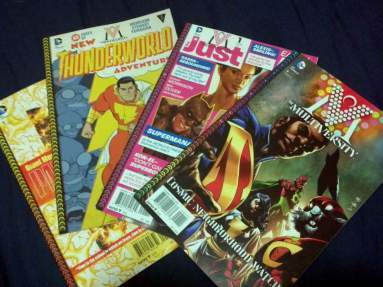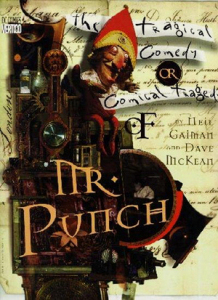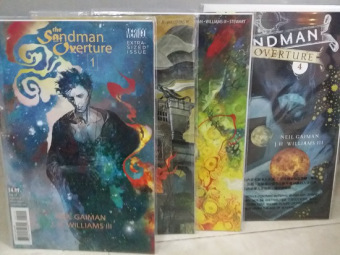Ray Hecht's Blog, page 33
April 5, 2015
Smashwords Edition
Here is the latest…
A new edition up on the Smashwords eBook website:
https://www.smashwords.com/books/view/532806
One advantage of Smashwords is that you can download in multiple formats, and don’t need a Kindle account. There’s the direct PDF, as well as .ebub.
I can also do a coupon code to give free copies, if anyone is interested. Just ask!
Of course, reviews as always are appreciated (especially – sorry SW – on the Amazon link: Amazon.com/dp/B00RQQIA26)

March 30, 2015
Money girlfriend
March 29, 2015
Grant Morrison, the Grand
I was so young then…
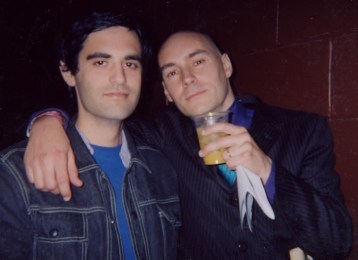
In 2005 or 2006 I met comic book writer Grant Morrison at a music festival in Los Angeles. It was an odd event in Echo Park, with many experimental bands playing at various stages, and at the same they had a workshop on the occult. Sadly, most people weren’t concerned about the workshop part.
I was ecstatic to hear that Grant Morrison would be there. He gave a fascinating interview. Seriously, you must youtube some videos of him immediately. Low-key event that it was, we got to chat personally for a few and he was nice enough to take a picture with me. I met his wife too.
I met him at Comic Con the following year as well, at events far more crowded, and he was still very nice. I won’t inundate with more pictures, however, I’m not that much of a fanboy.
For more here’s an particularly awesome video from 2000’s DisinfoCon introducing the tenants of chaos magic and how to do a masturbation sigil:
Note he’s Scottish.
And now my blog begins. Presenting the master of the Postmodern Superhero. The punk rock star of comics. My personal all-time favorite.
First things first, comparisons with Alan Moore are inevitable. They are both absolutely brilliant. They are both magicians. They both deconstruct the nature of the superhero like no other.
Yet, one is a mess of hair and the other is bald. One seems to be a misanthropic old man, and the other apparently has lot of fun as a writer. One hates all things mainstream, and the other is just fine with utilizing corporate characters as tools to tell the important stories.
Unfortunately, if you’re a Grant Morrison fan then you must be an Alan Moore fan as well but the reverse isn’t necessarily true. There’s a lot of overlap in themes, yet if you want to be an anti-mainstream purist you can skip Morrison. I think you would be missing out if you did that.
Anyhows, I am a great fan of both so what’s wrong with that?
As for me, I personally first came across Grant Morrison in my teens (though the story gets more interesting in my twenties), because of the huge phenomena that was JLA in the 90s. I was marginally interested, being that I followed everything important that was DC at the time, and the first volume was okay. Superman with a mullet notwithstanding. When I got to the Rock of Ages graphic novel, I was astounded. Then the following arc about the 5th dimensional beings left me well and truly mindfucked.
To me, the peak was the One Million crossover about time travel to 853rd Century. Great high-concept science fiction.
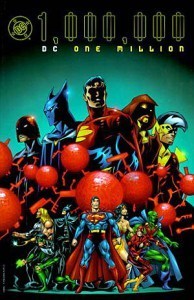
Grant Morrison has since further written Superman in such titles as All-Star Superman, Action Comics, which you can see my opinion thereof by following that link .
One of the random things I was into seeking back in the day was Flex Mentallo, a strange Vertigo piece about a corny superhero. I found issue 3 at discount, and spent years hunting down the full story.
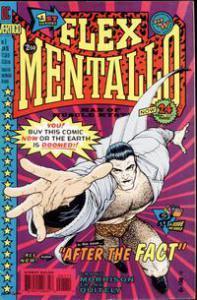
It had everything: deconstructionism, metafiction, with groundbreaking art by frequent Morrison collaborator Frank Quitely.
I contend that Flex Mentallo is superior to Watchmen. It takes a dissection of the superhero genre even further. And it’s funnier, wittier, with treatises on childhood trauma and cosmic abduction, and contains the classic line “Fredric Wertham was fucking right!”
It was so hard to get all four issues. The problem was that Flex Mentallo was a satire of the ‘hero of the beach’ and with republication risked getting sued by those old strongman ads. DC wouldn’t reprint a graphic novel for years. Back then, I bit the bullet and paid high prices on ebay and it was well worth it. Now, of course, there’s a trade.
Let’s go a bit more backwards, with Animal Man. The saga of Buddy Baker was one of Grant Morrison’s first forays into DC during the 80s British Invasion. This obscure hero was given a modern reboot, that quickly went from an essay on animal rights to some weird routes onto the nature of fiction. Combining Wile E. Coyote with Native American mythology, by the end it went full on metafiction. Most haunting of all was when Animal Man broke the fourth wall and looked directly at the audience, shouting “I can see you!”
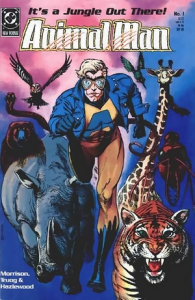
Concurrently, Doom Patrol was a very interesting take on outcast heroics. The patrol were always a bit odd, a tad off, and Grant Morrison knew how to play to the strengths of that. Robotman as eunich, transgendered street characters, and most of all were the villains based off art history. Brotherhood of Dada anyone?
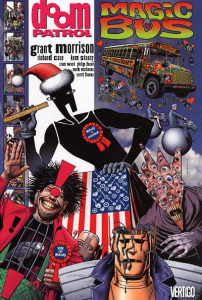
Not to mention Flex Mentallo first appeared in Doom Patrol.
These were all well and very, very good. However, Grant Morrison’s true opus came in the 90s with the Invisibles. By the time I got caught on, well after it was completed, I was generally getting into more esoteric subject matter. I was reading P.K. Dick and Robert Anton Wilson. I was collecting Disinfo books. I was coming across these strange interviews with one Grant Morrison comic writer, on the subjects of chaos magic and higher consciousness. It was time to read more.
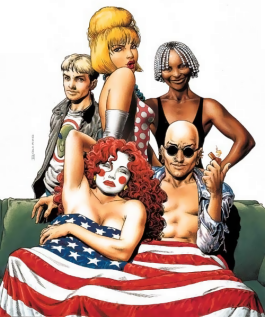
I ordered the entire set, and read on. Then I read them again, and a few more times at differing stages of my life. I’m about ready for a reread again.
The Invisibles is an epic take on Gnosticism and conspiracy theories, through the lens of an action comic, published by Vertigo. About a team of anarchists fighting the good fight against the forces of control in this world. It incorporated all kinds of references to psychedelic mythologies. All came to a head in that Singularity futuristic year of 2012.
It felt somewhat cathartic that my burgeoning spiritual path was overlapping with my love of comics and superheroes. I was doing it right all along. Much can truly be learned about human growth via the metaphor of the Superman. Thanks, Grant Morrison.
And, I may share that reading interviews on how Grant Morrison took LSD and other various chemicals for the sake spiritual experiences, that had an impact. Helped to encourage me with my own experiments utilizing psilocybin and dimethyltryptamine, legal or otherwise, rewiring some synapses within my nervous system in some arguably positive ways.
As always, reading books (and comics) can be such a bad influence!
There was a lot more where that came from.
More Vertigo. Sebastian O was a hilariously dandy steampunk. Kill Your Boyfriend was subversive as fuck.
The Filth being a must-read, a solid 12-issues hard to describe. Like an evil Invisibles. Very guttural, highly mindfucking.
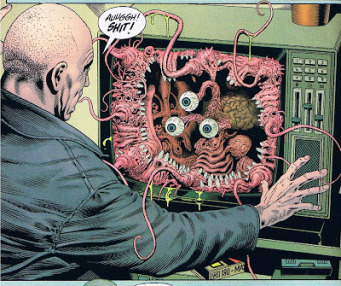
Superheroes never strayed far either. In the mid-2000s Grant Morrison had a brief stint at Marvel. A Fantastic Four miniseries, the excellent Marvel Boy. Mustn’t forget New X-Men.
Those days were the height of his prolificness. There was another irreverent superhero take – Sea Guy for Vertigo. We3: he heartwarming cybernetic tale of military-grade animals who just want to go home, all the while Frank Quietly pushing beyond the edges of what the comic medium can visually acheive.
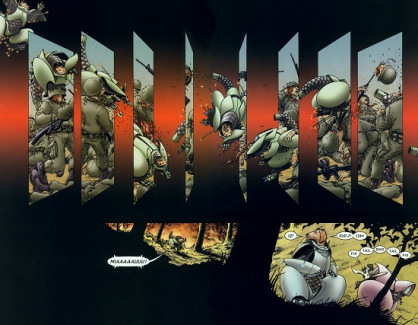
Lest I forget to mention Seven Soldiers! A baroquean complexity of storytelling like no other, seven different hero miniseries with plotlines that interact but the characters never directly meet. It was a treat to read the issues every Wednesday as they came out; wouldn’t have been the same to buy the trades later.
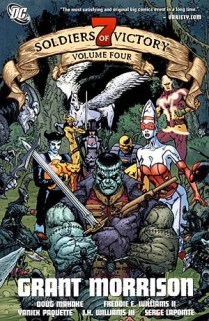
In particular, Grant Morrison’s Batman saga has been a major focus the last few years. Batman RIP/Final Crisis, Batman and Robin, the Return of Bruce Wayne, and the climactic Batman Inc. I have all them all on my bookshelf, among others.
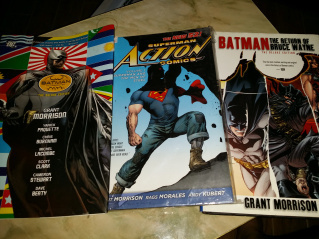
Joe the Barbarian, more on the interplay of fictional entities interacting with the ‘real world’, independent-minded g novel through Vertigo. Pretty nice read.
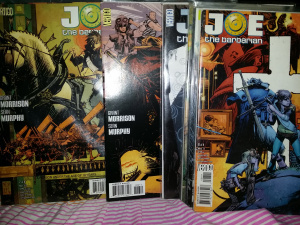
What, you may ask, is the great Grant Morrison working on today? Why that would be Multiversity. All through mainstream DC Comics and I absolutely love it. Took forever to come out though.
Multiversity concerns alternate realities in the DC multiverse as it were, and also has plenty of metafiction as each Earth reads comics about the other Earth. Nice and stand-alone, no big crossover, Morrison is given free reign to toy around with commentary on classic superheroes and that is what he does best.
I hope that covers enough. Not easy to sum up a major writer in one blog. These are but my favorites. Meanwhile, a true Morrison aficionado would be aware of his early work for 2000 A.D. and his recent Image output. Know that I make no judgments by leaving anything out.
Yet. One last DC series glaringly left out would have to… 52, the ‘real-time’ superhero comic published by DC in 2007 – 2008. This comic covered an entire year of the DC Universe without Superman & Batman (& Wonder Woman), after the Infinite Crisis crossover time-skipped a year later. The weekly series was cowritten by Mark Waid and Geoff Johns, other amazing writers.
In fact, now that I mention it, Geoff Johns was definitely the biggest DC writer through the 2000s to the present. He’s not the Vertigo literary sort of author, he’s not British either, but nonetheless I have read a ton of books by him and had endless fun doing so. Geoff Johns basically was DC of that era, the main architect of my adulthood fandom.
Next: a return to form with Geoff Johns – and DC Comics of the 2000s

Grant Morrison, the great
I was so young then…

In 2005 or 2006 I met comic book writer Grant Morrison at a music festival in Los Angeles. It was an odd event in Echo Park, with many experimental bands playing at various stages, and at the same they had a workshop on the occult. Sadly, most people weren’t concerned about the workshop part.
I was ecstatic to hear that Grant Morrison would be there. He gave a fascinating interview. Seriously, you must youtube some videos of him immediately. Low-key event that it was, we got to chat personally for a few and he was nice enough to take a picture with me. I met his wife too.
I met him at Comic Con the following year as well, at events far more crowded, and he was still very nice. I won’t inundate with more pictures, however, I’m not that much of a fanboy.
For more here’s an particularly awesome video from 2000’s DisinfoCon introducing the tenants of chaos magic and how to do a masturbation sigil:
Note he’s Scottish.
And now my blog begins. Presenting the master of the Postmodern Superhero. The punk rock star of comics. My personal all-time favorite.
First things first, comparisons with Alan Moore are inevitable. They are both absolutely brilliant. They are both magicians. They both deconstruct the nature of the superhero like no other.
Yet, one is a mess of hair and the other is bald. One seems to be a misanthropic old man, and the other apparently has lot of fun as a writer. One hates all things mainstream, and the other is just fine with utilizing corporate characters as tools to tell the important stories.
Unfortunately, if you’re a Grant Morrison fan then you must be an Alan Moore fan as well but the reverse isn’t necessarily true. There’s a lot of overlap in themes, yet if you want to be an anti-mainstream purist you can skip Morrison. I think you would be missing out if you did that.
Anyhows, I am a great fan of both so what’s wrong with that?
As for me, I personally first came across Grant Morrison in my teens (though the story gets more interesting in my twenties), because of the huge phenomena that was JLA in the 90s. I was marginally interested, being that I followed everything important that was DC at the time, and the first volume was okay. Superman with a mullet notwithstanding. When I got to the Rock of Ages graphic novel, I was astounded. Then the following arc about the 5th dimensional beings left me well and truly mindfucked.
To me, the peak was the One Million crossover about time travel to 853rd Century. Great high-concept science fiction.

Grant Morrison has since further written Superman in such titles as All-Star Superman, Action Comics, which you can see my opinion thereof by following that link .
One of the random things I was into seeking back in the day was Flex Mentallo, a strange Vertigo piece about a corny superhero. I found issue 3 at discount, and spent years hunting down the full story.

It had everything: deconstructionism, metafiction, with groundbreaking art by frequent Morrison collaborator Frank Quitely.
I contend that Flex Mentallo is superior to Watchmen. It takes a dissection of the superhero genre even further. And it’s funnier, wittier, with treatises on childhood trauma and cosmic abduction, and contains the classic line “Fredric Wertham was fucking right!”
It was so hard to get all four issues. The problem was that Flex Mentallo was a satire of the ‘hero of the beach’ and with republication risked getting sued by those old strongman ads. DC wouldn’t reprint a graphic novel for years. Back then, I bit the bullet and paid high prices on ebay and it was well worth it. Now, of course, there’s a trade.
Let’s go a bit more backwards, with Animal Man. The saga of Buddy Baker was one of Grant Morrison’s first forays into DC during the 80s British Invasion. This obscure hero was given a modern reboot, that quickly went from an essay on animal rights to some weird routes onto the nature of fiction. Combining Wile E. Coyote with Native American mythology, by the end it went full on metafiction. Most haunting of all was when Animal Man broke the fourth wall and looked directly at the audience, shouting “I can see you!”

Concurrently, Doom Patrol was a very interesting take on outcast heroics. The patrol were always a bit odd, a tad off, and Grant Morrison knew how to play to the strengths of that. Robotman as eunich, transgendered street characters, and most of all were the villains based off art history. Brotherhood of Dada anyone?

Not to mention Flex Mentallo first appeared in Doom Patrol.
These were all well and very, very good. However, Grant Morrison’s true opus came in the 90s with the Invisibles. By the time I got caught on, well after it was completed, I was generally getting into more esoteric subject matter. I was reading P.K. Dick and Robert Anton Wilson. I was collecting Disinfo books. I was coming across these strange interviews with one Grant Morrison comic writer, on the subjects of chaos magic and higher consciousness. It was time to read more.

I ordered the entire set, and read on. Then I read them again, and a few more times at differing stages of my life. I’m about ready for a reread again.
The Invisibles is an epic take on Gnosticism and conspiracy theories, through the lens of an action comic, published by Vertigo. About a team of anarchists fighting the good fight against the forces of control in this world. It incorporated all kinds of references to psychedelic mythologies. All came to a head in that Singularity futuristic year of 2012.
It felt somewhat cathartic that my burgeoning spiritual path was overlapping with my love of comics and superheroes. I was doing it right all along. Much can truly be learned about human growth via the metaphor of the Superman. Thanks, Grant Morrison.
And, I may share that reading interviews on how Grant Morrison took LSD and other various chemicals for the sake spiritual experiences, that had an impact. Helped to encourage me with my own experiments utilizing psilocybin and dimethyltryptamine, legal or otherwise, rewiring some synapses within my nervous system in some arguably positive ways.
As always, reading books (and comics) can be such a bad influence!
There was a lot more where that came from.
More Vertigo. Sebastian O was a hilariously dandy steampunk. Kill Your Boyfriend was subversive as fuck.
The Filth being a must-read, a solid 12-issues hard to describe. Like an evil Invisibles. Very guttural, highly mindfucking.

Superheroes never strayed far either. In the mid-2000s Grant Morrison had a brief stint at Marvel. A Fantastic Four miniseries, the excellent Marvel Boy. Mustn’t forget New X-Men.
Those days were the height of his prolificness. There was another irreverent superhero take – Sea Guy for Vertigo. We3: he heartwarming cybernetic tale of military-grade animals who just want to go home, all the while Frank Quietly pushing beyond the edges of what the comic medium can visually acheive.

Lest I forget to mention Seven Soldiers! A baroquean complexity of storytelling like no other, seven different hero miniseries with plotlines that interact but the characters never directly meet. It was a treat to read the issues every Wednesday as they came out; wouldn’t have been the same to buy the trades later.

In particular, Grant Morrison’s Batman saga has been a major focus the last few years. Batman RIP/Final Crisis, Batman and Robin, the Return of Bruce Wayne, and the climactic Batman Inc. I have all them all on my bookshelf, among others.

Joe the Barbarian, more on the interplay of fictional entities interacting with the ‘real world’, independent-minded g novel through Vertigo. Pretty nice read.

What, you may ask, is the great Grant Morrison working on today? Why that would be Multiversity. All through mainstream DC Comics and I absolutely love it. Took forever to come out though.
Multiversity concerns alternate realities in the DC multiverse as it were, and also has plenty of metafiction as each Earth reads comics about the other Earth. Nice and stand-alone, no big crossover, Morrison is given free reign to toy around with commentary on classic superheroes and that is what he does best.
I hope that covers enough. Not easy to sum up a major writer in one blog. These are but my favorites. Meanwhile, a true Morrison aficionado would be aware of his early work for 2000 A.D. and his recent Image output. Know that I make no judgments by leaving anything out.
Yet. One last DC series glaringly left out would have to… 52, the ‘real-time’ superhero comic published by DC in 2007 – 2008. This comic covered an entire year of the DC Universe without Superman & Batman (& Wonder Woman), after the Infinite Crisis crossover time-skipped a year later. The weekly series was cowritten by Mark Waid and Geoff Johns, other amazing writers.
In fact, now that I mention it, Geoff Johns was definitely the biggest DC writer through the 2000s to the present. He’s not the Vertigo literary sort of author, he’s not British either, but nonetheless I have read a ton of books by him and had endless fun doing so. Geoff Johns basically was DC of that era, the main architect of my adulthood fandom.
Next: a return to form with Geoff Johns – and DC Comics of the 2000s

March 27, 2015
Sorry!
March 23, 2015
Mad genius of comics: Alan Moore
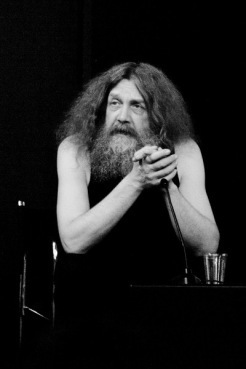
There he is.
When it comes to literary comic icons, no man comes before Alan. So much has been written about the unofficial leader of the 80s British Invasion, who heralded the coming of Vertigo and then disavowed DC and all mainstream publishing. The mortal enemy to Hollywood who has had at least half-a-dozen films adapted against his wishes, unlike Neil Gaiman who always seems to rather enjoy his celebrity. Mr. Moore, the proverbial purist artist always refusing to compromise. The mad occultist who refuses to shave. The genius we all aspire to be and will always fail to live up to.
Documentary: The Mindscape of Alan Moore
I shall start with Watchmen, as most people have started with that famed tome. Though, please note I think Moore’s legacy is far bigger than that one superhero deconstruction — perfect work of controlled storytelling it may be — and I think he has since surpassed his early work time and time agian. More on that below.
I was about 14 when I read the full Watchmen in graphic novel form, having missed the original issues in 1986 as a small child. A reputation had long preceded it at this point and I was getting into comics on a deeper level at the time, so I was looking forward to reading and seeing what all the fuss was about. I had a whole Saturday afternoon to kill at detention, they made you sit around for 4 hours; I was not a good student at the time. I read the entire work in one sitting. I was, of course, blown away. And I did a book report.
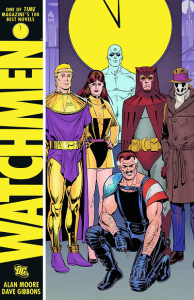
Watchmen came about when DC Comics purchased the Charlton library characters, Blue Beetle and Captain Atom and The Question, and Moore put together a proposal called Who Killed the Peacemaker? DC realized the status quo would be torn asunder, and they were going to incorporate them post-Crisis on Infinite Earths anyhow, so he was told to keep the plot but make up new characters.
Illustrated with precision by Dave Gibbons, it grew bigger than the usual story. Blue Beetle became the cheesy Batman-esque Nite Owl, Captain Atom as the one Superman of this world became the omnipotent Dr. Manhattan. They were archetypes as well as individuals.
Not only did Watchmen win the coveted science fiction Hugo Award, after that they changed the rules so comics could no longer win.
What struck me most of all were the extras between each chapter. Newspaper clippings, magazine interviews, notes, all the the world-building to show the authenticity of a hyper-realistic setting.
Also, the usual Alan Moore themes of rape and the illusion of time.
Watchmen has since become passé. Gritty realistic superheroes have been done to death, and Moore has specifically said in interviews he regrets causing that trend.
Personally I never watched the movie all the way through, and I don’t intend to. Mr. Moore is famously against all Hollywood adaptations, and some people find him a cranky old man. I moreover stand with him on that.
With that, let’s go some earlier Moore.
His mainstream days were relatively sparse, but every single one had an impact. There was Captain Britain, with Alan Davis. There was a bit of Superman, such as the classic birthday tale For the Man Who Has Everything, also illustrated by Dave Gibbons. And that final imaginary tale (aren’t they all?) previously mentioned, Whatever Happened to the Man of Tomorrow?
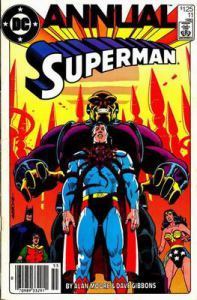
Speaking of Superman: Supreme. In the 90s, Moore was invited to work for Liefeld’s creator-owned imprint over at Image. Supreme was a very obvious riff on you-know-who. It quickly became a brilliant satire/homage/deconstruction on Silver Age superheroics. The ‘Man of Majesty’ was both corny and endearing, engaging within a complex plot involving multiple realities and retroactive timelines.
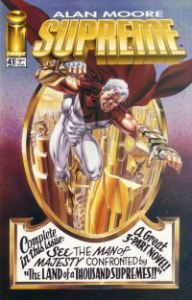
I should say that Moore’s American work really started with Swamp Thing, of which I’ve only read the first two volume. I know, I know, very late in the game on this. If I’m supposed to be completist the I better get to it. The Green, The Green…
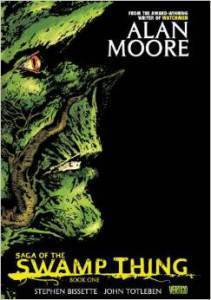
Going back a bit further, there’s Miracleman. Now, the backstory of that character is Baroquean inof itself. The British knockoff of Captain Marvel was originally Marvelman, given a reboot in the 80s and published on the American side by Eclipse comics. However, in fear of being sued by Marvel Comics they changeed the name to Miracleman. And then it was abruptly canceled, with the legal ownership thereof in legal limbo for decades.
This made the series very hard to read before the digital age. I did order the first arc on ebay and it was a great read. Finally, I read the entire series online. Don’t ask questions about the legality of that, please.
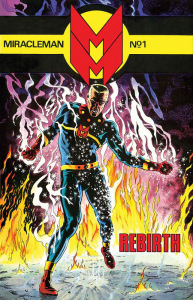
Neil Gaiman’s brief run was interesting as well. A funny thing, now Miracleman of all things is owned by Marvel and they say they’re finally going to reprint the classic issues as well as let Gaiman complete his unfinished story! Guess I’ll believe that when I see it.
Meanwhile, Alan Moore in the 80s. There was the dystopian V for Vendetta, currently in print under the Vertigo banner, one of the first of his major comics that defied classification.
On the subject of V for Vendetta, this is very much the reason that I agree with Alan Moore on all things Hollywood. The film was an atrocity. It completely misses the point of the original, pretending to be a deep critique of American post-9/11 politics — taking place in the U.K. for no reason and badly done at that. It was supposed to be about Thatcherism. Moore was absolutely treated wrongly by the pretentiously stupid Wachowski Brothers. He was 100% right to disavow the film and have his name taken off.
In the end, the legacy lives on with those Guy Fawkes masks.
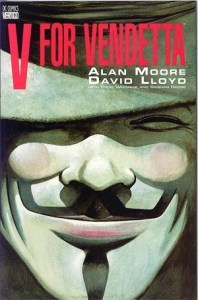
Another mediocre movie based off brilliant source material, From Hell is a literary masterpiece like no other. This riff on Jack the Ripper conspiracy theories doesn’t really aim to solve it, there are deeper takes on the nature of reality at play.
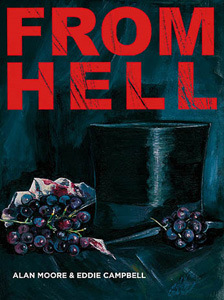
I remember when I read much of these graphic novels, I was living in L.A. during my starving artist period. How did I afford to read, you ask? I went to the library in hipster Silverlake and they had an extensive archive.
Back in the 2000s, Moore had started his own America’s Best Comics (ABC) with a host of deconstructionist characters. Tom Strong, among many others.
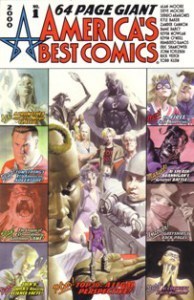
I enjoyed Top 10, art by Gene Ha containing a thousand references of fictional universes across the panels.
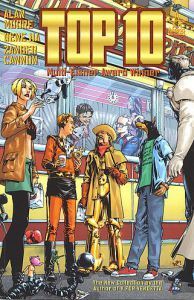
Most important of all, Promethea. I read them all with great wonderment, studying intently, during my L.A. days. Promethea began as an interesting hero with various mythic feminism themes, Moore’s take on Wonder Woman perhaps. It soon turned into an epic occultic meditation on the Tarot and the Kabbalah.
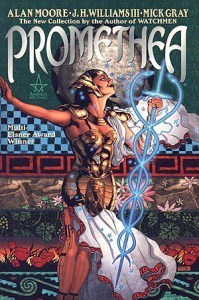
ABC Comics was actually an imprint of Wildstorm, Jim Lee’s company that was one of the original founders of Image Comics. Wildstorm did good work, but then they were eventually bought by DC and he had to quit. The Absolute Edition of Promethea even says Vertigo. Poor Alan Moore.
What else? Let me mention Lost Girls. I was lucky enough to read this forbidden comic in hidden corners of my local bookstore. The hardcore pornographic tale of Alice, Dorothy, and Wendy as they tell sex stories and enjoy orgies, choosing pleasure over violence on the eve of World War I.
Recognize the names? Yes, those literary references.
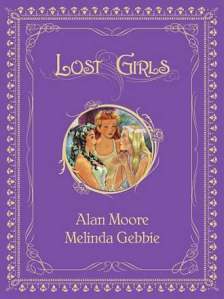
Finally, the most important essay of literary references of all time: The League of Extraordinary Gentlemen.
This would have to be the biggest alltime gap in terms of “the book was better” in human history, and that’s all I’m going to say about that.
Starting off with a premise of a Victorian Justice League, Gentleman Alan Moore took the public domain rights of Mina Harker (Dracula), the Invisible Man, Dr. Jekyll, Captain Nemo, and Allan Quatermain and claimed they all live in the same universe. This concept soon expanded to something quite beyond a slew of mere Victorian literary references peppered in by Kevin O’Neill’s detailed art — brilliant though that was in the first two volumes. Villains being Professor Moriarty and H.G. Wells Martians.
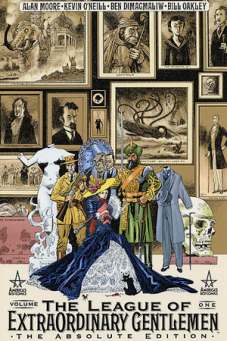
League has since evolved to be an ambitious force that seeks to unify ALL FICTION EVER.
The amazing part is that when you read a League book, the fun doesn’t stop when you finish. You really need to go look up Wikipedia or Jess Nevins site to understand all that’s going on. Then you may feel the need to watch a German Expressionist film, read some Virginia Woolf, catch up on H.P. Lovecraft mythos, and study British spy shows. Seriously, it takes a lot to keep up.
LoEG was originally published by ABC, but Moore and O’Neil own the copyright and so they have taken their franchise to Top Shelf and can do with it what they will. And I am glad they do.
Once a year I insist on going down to Hong Kong and purchasing the latest League, one of the few comics still worth reading that way. Here’s my collection.
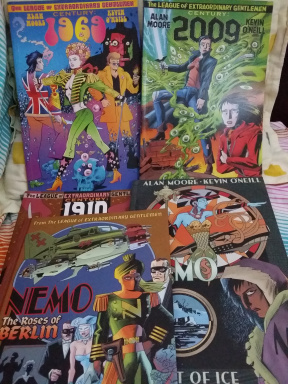
Currently, there are the Nemo graphic novels. Century was especially important. While the Black Dossier took place in the 50s, referencing 1984 and James Bond (although with copyright material they can’t say those references directly) and much more, Century went beyond even that. The first chapter was 1910, a more familiar time period, while the psychedelic 1969 was a whole other take incorporating movies and music. 2009 blew my mind, though I may not totally agree with Moore’s pessimistic disapproval of contemporary fiction.
I’m using a lot of self-control right now to not spoil the shocker of which modern popular character turned out to be the Antichrist, but let’s just say he did have a mark of the Beast and he is a wizard kid…
Alan Moore is disgruntled and hates society, but he to. He’s a genius. He’s a magician and he knows what he’s talking about. To be fair, not everyone has the chance to be as independent-minded as he is, and that is partly built on his previous success in the mainstream. Yet that is what he earned. I stand with Moore. Fuck Hollywood, fuck the mainstream… but then again don’t fuck the mainstay comics companies altogether. I do still get some enjoyment out of them.
Next: another mad genius occultic scribe of comics, who is not above working with the corporate publishers, and he definitely has somewhat more fun with it.
Grant Morrison time!

March 18, 2015
Scraping together some Chinglish
Sorry, spare pickings.
Anotherof those poetic notes about the green grass’s requests.
Enjoy!
Meanwhile, I shall scour the cityscape for more next week…

March 15, 2015
Sandman. By Neil Gaiman.
This is it, the very core of DC’s Vertigo Comics…
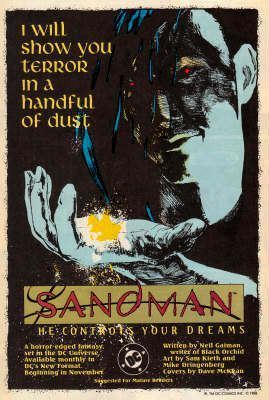
Sandman. By Neil Gaiman.
I remember when I first got into Sandman. Freshman year of high school in the mid-90s, too young to truly get it but old enough to start reading such grownup material by the great Neil Gaiman.
I came across some defunct Wizard magazine issue, at the height of my superhero obsession, it was about villains and cosmic beings and mentioned the mysterious Endless. Then I got the proto-Vertigo issue of “Who’s Who” that focused on the mature reader’s Vertigo comics, teaching me the basics of that mythology.
I was intrigued. A reputation was forming. But instead of getting the latest Sandmans on Wednesday at the comic shop, it seemed this one was no mere monthly periodical. Seemed it needed to be read like proper books.
I did get the first graphic novel collection, Preludes and Nocturnes, which made for a slow start. Then I ultimately ordered the rest from a book publisher outlet, out of order. Reading about the fall and rise of Lucifer and the key to hell, stories at the World’s End Inn, and I tried to make sense of it storyline by storyline. It taught me much about Greek mythology, Shakespeare, and Edwardian occult groups.
One chapter won the World Fantasy short story award, I believe the only comic to do so.
Seventy-five odd issues with various special editions. Eventually, I caught up to it all, and had to reread and reflect several times over in my life.
Vertigo’s greatest success. A uniquely popular DC comics for women, as well. And goth kids.
What exactly was this comic, Sandman, so highly regarded? Why was it even called the Sandman? Hard to explain. Where to start…
Like many of the world’s greatest comics, the name was a jumping off point based off corny comics from the 40s and/or 60s. There was Golden Age Sandman, some detective with a sleep gun. There was the Kirby Sandman, a superhero battling in the land of dreams. All those characters were incorporated into Gaiman’s epic, though not the core.
Sandman was originally even in the DC Universe proper, with early issues including a few superheroes. That soon grew too small a setting and Gaiman wasn’t limited by continuity, though he toyed with DC history on occasion.
The main protagonist, if you will, was Dream of the Endless. Also known as Morpheus, ruler of the land of dreams. Dream was not a god because gods need to be worshiped to exist. He was a member of the Endless, which have higher origins. There was Destiny the oldest — who was a host from 70s horror comics, sister Dream, Destruction, Desire, Despair, and Delirium. Sense a pattern?
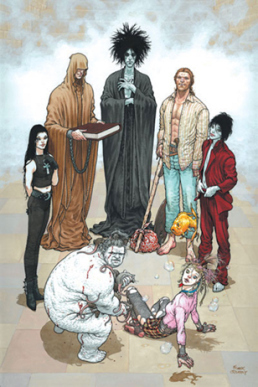
But you can’t write a monthly comic based off near-omnipotent beings. Oftentimes, this mythology was the starting point for short stories about other mortals interacting in this grand fantasy world. And the immortals, the demons, the witches, and the lovers. The historical figures. It’s tricky to claim one protagonist.
Let me speak a moment about Death.
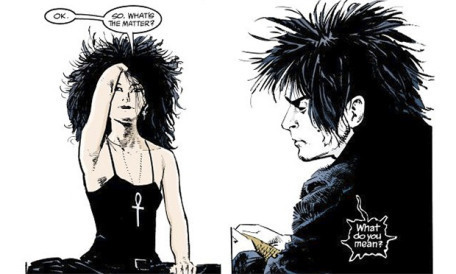
One of the most interesting creations was Gaiman’s interpretation of Death. Not a dark reaper, but a cutesy goth girl who gives great advice. You end up just adoring her.
She even got two of her own miniseries, lovingly illustrated by Chris Bachelo: The Time of Your Life. Very much worth reading.
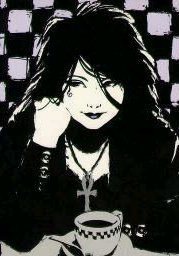
I won’t give anything away, but the story of Morpheus concluded with a solid ending by number 75. Neil Gaiman has come back from time to time, such as with original graphic novels/novellas Dream Hunters and Endless Nights. But most spinoffs of the rich Sandman mythos have been written by others.
In my personal opinion, Gaiman peaked as a comic writer. His prose does not compare. He’s a charming wordsmith, and he’s became very famous, but I always feel a bit let down that so many people read his novels yet never the comic. I don’t know, I just didn’t get that much out of American Gods and Neverwhere. Sandman, however, has warmed my heart and fascinated me throughout my times.
I did enjoy Good Omens very much, cowritten by Terry Pratchet (RIP).
Stardust meanwhile is a must-read fairy tale, but I must express my disappointment with the greater readership once again. The original illustrated version with art by Charles Vess is essential, don’t get the paperback.
I’m about to reread soon, just came in the mail…
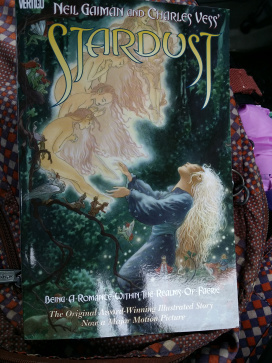
Another original graphic novel worth it was The Tragical Comedy or Comical Tragedy of Mr. Punch, with the brilliant collage artist Dave McKean (who did the Sandman covers). A simple tale of youth and the horror of childhood. Now that one freaked me out.
I’ve read several others. Went back and found his rare, interrupted Miracleman run. 1602 for Marvel was sub-par. Black Orchid as well. Batman: Whatever Happened to the Caped Crusader? was decent I suppose.
These days Gaiman is obviously not so prolific in comics; he has since become primarily a novelist. I say that the world is missing out.
There is one more to read though. Currently, in the midst of the latest Sandman update, entitled Overture. It’s a high-concept prequel, focusing on Dream’s travels across the universe, and it brings back that pure 90s Vertigo fantasy that I loved so dearly.
That’s forever Neil Gaiman, to me.
And on to further writers.
To be continued with a certain master who was mentor to Gaiman himself. A mad genius who disavowed DC and all mainstream comics, even though Vertigo and Sandman wouldn’t have existed without his contributions.
It isn’t controversial to say he is the single greatest comic writer of all. He is also possibly the most brilliant living author period.
Next up: one insane wizard by the name of Mr. Alan Moore

March 11, 2015
The special toilet
March 8, 2015
Suggested for Mature Readers: Vertigo Comics
We all like our quality television these days, don’t we? It’s a given that the new era of literature is television, started by HBO’s crime dramas and continuing on other networks. As we all agree. We all take it for granted that storytelling is evolving, and the once maligned medium of TV now produces the highest quality there is. Welcome to the Golden Age.
However, at least a decade before HBO rewrote the rules of television there was another maligned medium breaking all the rules. Comics never quite got the respect they deserved, but the proto-HBO of comics would still be Vertigo.
In the mid-to-late 1980s, DC Comics started publishing some very mature comics. It was very much the house that Alan Moore built. Starting with Swamp Thing and continuing with Watchmen and beyond, DC won award after award and their horror comics imprint began to get very literary indeed.
Mr. Moore has since disavowed DC Comics, and refuses to work with any mainstream publisher. He’s more of the INDIE camp these days… Yet, they owe him a great deal.
Alan Moore deserves a post all his own, coming soon.
Meanwhile, the most popular comics coming out of DC’s horror imprint in 1989 turned out to be Sandman by Neil Gaiman. It started out as a reference to an obscure superhero, incorporating various old 70s horror characters, and then it turned into one of the greatest fantasy epics of all time.
Issue 1 of Sandman simply said “Suggested for Mature Readers.” There was cursing, nudity, the whole bit. Like rated R movies. Was it risky for DC, the same mainstream publisher as Superman, to publish?
By 1993, there was a new label. It said Vertigo up there in the corner. Thus, Vertigo – a subset of DC – was born.
Neil Gaiman and Sandman will get a post all their own very soon as well!
And, you’ll notice both Moore and Gaiman are British writers. That’s another theme of quality comics – they tend to be part of the comic’s 80s British Invasion. Guess the founders of the English language tend to be better scribes.
Winning scores of Eisner Awards every year and popularizing the economic model of selling trade paperback reprints (i.e., “graphic novel” volumes) at bookstores, Vertigo changed the game forever and fully realized the medium’s potential. Finally, comics grew up.
Below are a few of my favorite Vertigo titles. Not meant to cover everything, just a few. As said, early Alan Moore and Gaiman’s most popular works – especially Sandman – will be covered later. Don’t you worry. I’ll also get into Invisibles by Grant Morrison and Transmetropolitan by Warren Ellis. All in due time.
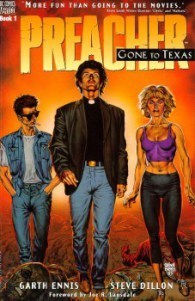
Firstly, Preacher by Irish scribe Garth Ennis was the most badass comic to read when I was in high school. Ennis, by the way, known for writing the Demon and John Constantine (an Alan Moore creation) in the Swamp Thing spinoff Hellblazer. A lot of up-and-coming writers would write Constantine over the years, it was Vertigo’s longest running series, but I didn’t usually follow.
Preacher wasn’t part of the greater “Vertigo Universe”, it was its own self-contained, creator-owned thing. Which is best.
I was determined to read it all, and snuck away at the bookstore to catch up on the graphic novels. I don’t think it was finished yet when I started back in the mid-90s, but by the time the last volume came out I read it to the end.
It was an American Western written with the perspective of the outsider, fully capturing and bottling that Americana essence. About Jesse, a preacher who fucks and drinks. And also on the lookout from a corrupt God. And had the superpower Word based off being possessed or something by the offspring of angel and demon. There were vampires and rednecks and the Saint of Killers and grungey-suicidal Arseface and Vatican conspiracies and an inbred descendant of Jesus Christ.
It was oh so blasphemous, so good.
I heard a TV show is finally in the works.
Let me add that I believe the Da Vinci Code ripped off Preacher. The Da Vinci Code was a terrible book as everybody knows, but most are unaware that the first work of fiction to successfully use those Holy Grail bloodline conspiracy theories was in fact Preacher. So, kudos to Garth Ennis and a hearty fuck you to Dan Brown.
In more recent history, I didn’t like Ennis’s superhero lampoon The Boys (it’s funny but enough already, we get it you hate superheroes). I am told I should be currently reading his series Crossed from Avatar Press.
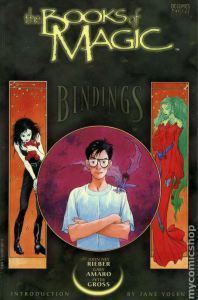
Books of Magic was one of my heartfelt discoveries, not particularly popular but I enjoyed it. Originally a one-off graphic volume by Gaiman, it was about a bespectacled young wizard but moreso a vehicle to tour the mystical sections of the DC/Vertigo Universe.
Then, the long-running series by John Ney Rieber and then Peter Gross continued the story of Timothy Hunter. His boyhood, his girlfriend Molly, Faerie connections, dealings with demons.
You may notice that it’s suspiciously similar to Harry Potter, the young Brit sorcerer in glasses with an epic destiny. Books of Magic was created several years earlier. And Tim was much cooler than lame Harry Potter. Gaiman actually could have sued J.K. Rowling, like many others did, but gentleman that he is he declined.
In my early 20s I hunted down every used graphic novel and back issue until I read the whole story, and when Rieber’s run concluded I picked up the issues written and illustrated by Gross. It was lovely. I didn’t read those newer ones about him grownup, Wartime or somesuch, I’ll always remember Tim Hunter as a boy.
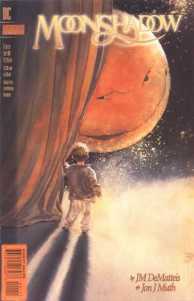
One of my absolute favorite things ever was Moonshadow, beautifully written by J.M. DeMatteis (remember I was a fan of his 80s-era Justice League) and elegantly painted by Jon Muth. By favorite things ever, I don’t mean one of my favorite comics, or even books/fiction, I totally mean one of favorite things ever.
Actually, was previously published by Epic – Marvel’s less successful imprint –but reprinted by Vertigo years later. I’m glad they did.
The very first painted comic, even predating Marvels. The watercolors by Muth have an altogether different feeling from Alex Ross’s oils. Surreal, dreamlike space saga about a boy exploring a ridiculous universe, spaceships and social satire and coming-of-age and sex, until enlightenment is attained.
I remember reading the whole book in one sitting on a quiet Ohio weekend as a kid, a thick book covering twelve issues and an epilogue.
A most perfect work of art, cannot be overstated. My heart aches in remembrance.
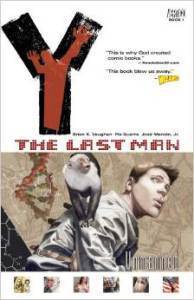
For a while in the 2000s I followed all of Y the Last Man. Got them at the library during my California years. A solid story about the last man on Earth, exploring the post-apocalyptic remnants of the United States run by women after all but one of the men died off. An exciting series, with mysteries unresolved at the end.
Brian K. Vaughan is a fun and poignant storyteller. I recommend his original graphic novel Pride of Baghdad about zoo animal casualties of the Iraq war.
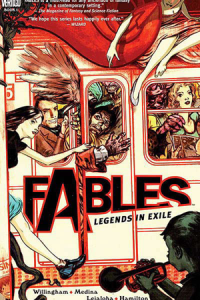
Currently, I am obsessed with Fables. The series is just about to end after a very long run of 150 issues. To compare, Sandman ended at 75 and Preacher at 66.
Best drawn by Mark Buckingham and expertly written by Bill Willingham. Oddly enough I never liked his superhero work. Incidentally, I met him at the L.A. Book Fair once and he was a bit mean to me about politics. But with Fables, he’s been on fire for years.
The premise is that Snow White and Beauty & the Beast and Bigby the Wolf (who can transform to a human, obviously) and all the fairy tale characters escaped to the real world. Because Pinocchio’s father Gepetto has created an evil empire. There’s the farm, where the inhuman ones have to live, and three little pigs have a revolution. Prince Charming is a sleaze who divorced and remarried all those princesses, etc. How much more awesome can you get?
Granted, as for politics Fables is a metaphor for Israel but I forgive that.
The mythology is very broad, with endless possibilities for stories and character development. Well, almost endless. The politics get very complex; a rare story told in real time as people get married and have kids. Others die, and many actually stay dead. There are spinoffs too about Jack the giant killer, Cinderella as spy, and so on.
A good reminder that fairy tales were never supposed to be for children in the first place. The stories can get very dark indeed. Not Disney.
Consistently the best that Vertigo has produced for at least the past decade. I’ll miss you, Rose Red and the cubs!
Those are some of the Vertigo books I enjoyed reading most of all. I am leaving out a lot. Impossible to fit everything, but that’s a start.
Note that I always preferred Vertigo’s fantasy comics to their many crime comics. I think it suits the medium better; not horror exactly but that magical realism in a modern setting is Vertigo’s true signature style to me.
Now that Fables is ending, what do you recommend I read?
Next: In keeping my word, a post of either Neil Gaiman or Alan Moore. But who first? Where to start, on my next installment(s) focusing on favored comic authors…





